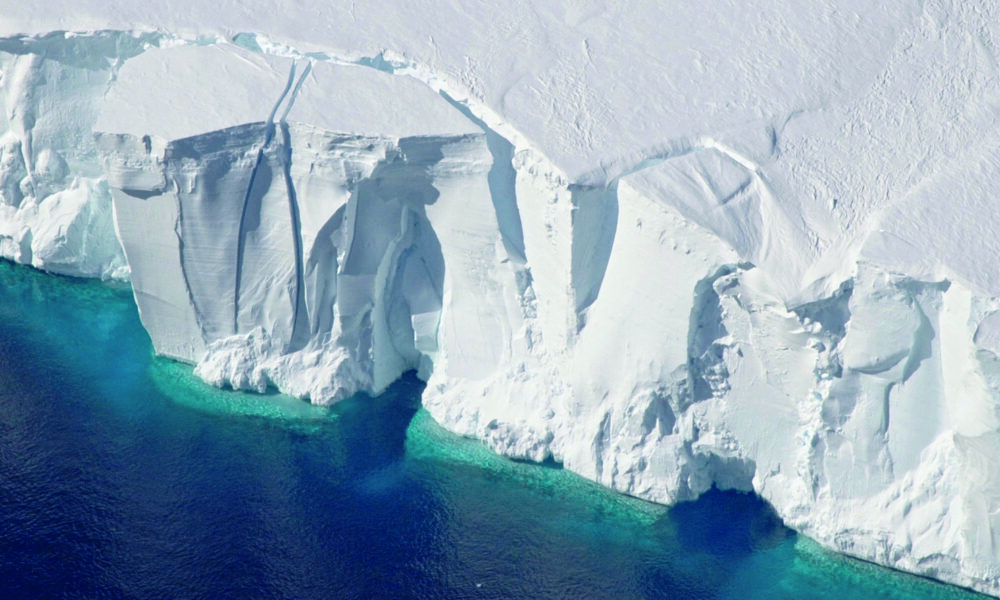In the past few decades, human-driven global warming has left many questioning the future of the Earth’s oceanic dynamics and the implications of altering them. The Antarctic ice sheet (AIS), the largest body of ice on the planet, is retreating at an accelerated rate due to increased greenhouse gas emissions causing sea levels to rise. The Western Antarctic ice sheet is of particular concern to scientists as it contributes 25 per cent of total yearly global ice sheet melt.
Ice sheets are formed by snow and oceanic water freezing. They are embedded in bedrock but also have parts that float on the ocean’s surface, known as ice shelves. Ice shelves play an important role in maintaining the stability of ice sheets, and act as buttresses by slowing down ice flow. Thinning, or loss of ice shelves due to warm oceanic currents and atmospheric temperatures, causes marine ice sheet instability—when ice thickness drops below certain values and structural failures occur, leading to breakage or calving of the ice.
The loss of buttressing ice shelves is a concern for many researchers, as it can lead to ice sheet loss and a subsequent rise in sea levels.
The 2016 Paris Agreement aimed to limit global warming by the end of this century to a maximum increase of 1.5℃ to 2℃ above pre-industrial levels. Natalya Gomez, an associate professor at McGill’s Department of Earth and Planetary Sciences, recently co-authored a research article in Nature which modelled possible responses of the Antarctic ice sheet to 1.5, 2, and 3 degree rises in global temperatures.
Computer models were made using geological records depicting previous Antarctic ice sheet behaviours and their contributions to sea levels. A wide range of parameters, such as hydrofracturing—the disintegration of the bedrock supporting the ice sheet—were integrated into the simulations. Uncertainty within the parameters was accounted for using geological observations and statistical methods.
“There’s a wide range of projections of what the ice sheets may do in the future. We have captured the worst case scenarios,” Gomez said in an interview with The McGill Tribune. “Our model includes processes such as marine cliff instability and ice shelf hydrofracturing [….] Previous works have introduced these effects which allow us to consider a more realistic forcing of the ice shelf.”
Gomez’s team found that in the 1.5℃ and 2℃ warming scenarios, models predicted a similar rate of Antarctic ice loss at the end of this century as today, with a median contribution to sea levels of eight and nine centimetres respectively by 2100. The 3℃ simulations, however, predicted accelerated rates of Antarctic ice loss due to thinning and hydrofracturing of ice shelves. In more extreme simulations, ice instabilities became omnipresent across Antarctica, with a median contribution of 34 centimetres to sea levels by 2100. By 2300, average global sea levels in the 3℃ warming simulations are expected to reach 9.6 metres via Antarctic ice contributions, which is 10 times more than the 1.5℃ warming scenario.
Although imagining the flooding of our home planet is not a comforting thought, climate technologies and renewable energy sources are becoming more prevalent, showing promise for the future.
“We have the technology and solutions already there,”
– Natalya Gomez
Additionally, more sustainable policies should be adopted, such as green taxes for environmentally harmful activities, increased investments in renewable energy sources, and protection of natural ecosystems.
In light of these findings, governments worldwide must closely adhere to the Paris Agreement since the consequences of exceeding the limits set by the treaty do not paint a bright future for our planet, and all life that inhabits it.






